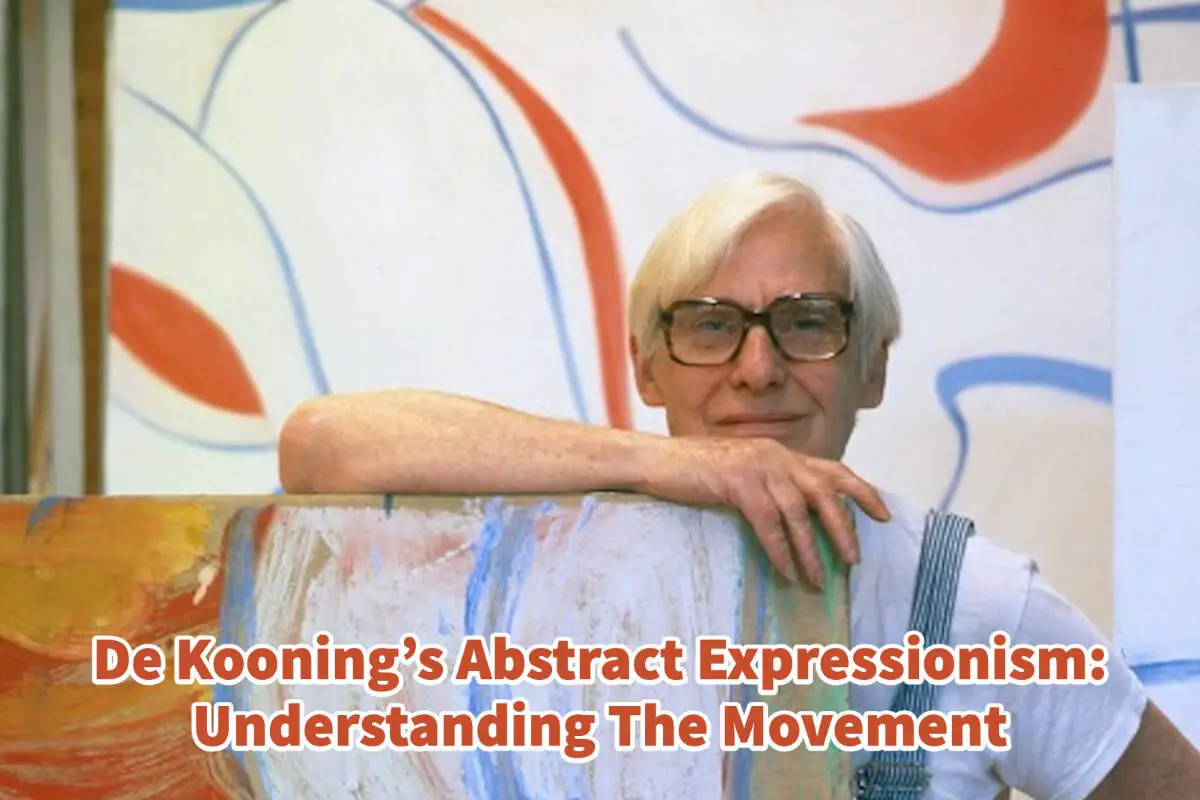One of my favorite Abstract Expressionism artists is Willem De Kooning. I have always appreciated how he can so expertly used colors, forms and gestural marks.
Willem De Kooning is considered one of the key founders of the Abstract Expressionism movement. Abstract Expressionism is a broad term that is applied to a range of artwork and styles. The movement’s main characteristics are the use of spontaneous, gestural brushstrokes and interest in abstract forms that are nonrepresentative.
De Kooning was at the heart of the movement that emerged in New York City in the years following World War II. Read on to learn more about Willem De Kooning and discover some of his most important works of art.
Table of Contents
- Willem De Kooning And Understanding The Abstract Expressionism Movement
- Key Aspects Of Willem De Kooning’s Work
- Willem De Kooning Challenges Traditional Notions Of Beauty And Femininity
- 10 Important Willem de Kooning Abstract Expressionism Artworks
- Related Questions
Willem De Kooning And Understanding The Abstract Expressionism Movement
Willem De Kooning was a Dutch-American painter widely regarded as one of the most influential artists of the 20th century. Born in Rotterdam in 1904, he moved to the United States in 1926 and quickly became part of the emerging New York art scene.

He is considered one of the founders of the Abstract Expressionist movement, and his artwork played a significant role in shaping the movement’s aesthetic and philosophical concerns.
Some of our other favorite artists that were important Abstract Expressionism include Jackson Pollock and Clyfford Still.
What Is Abstract Expressionism?
Abstract Expressionism is a broad term for diverse artistic practices that emerged in the United States immediately following World War II. It is characterized by a focus on spontaneous, gestural qualities of painting and an interest in abstraction and non-representational forms.
Abstract Expressionism rejected the conventions of traditional art and sought to create a new form of art that was expressive, intuitive, and emotionally charged.
De Kooning was drawn to the principles of Abstract Expressionism because they allowed him to explore new ways of expressing himself through his art. He was interested in art as a form of spontaneous expression and saw painting as a way of tapping into the deeper, more intuitive parts of himself.
This focus on spontaneity and intuition was a hallmark of Abstract Expressionism, and it helped to distinguish it from other art movements of the time. His artistic spontaneity is also one of the aspects of his artwork that I admire greatly.
Key Aspects Of Willem De Kooning’s Work
There are several key aspects of Willem De Koonings Work and Abstract Expressionism. These key aspects show his significant role in this and the art movements after him.
Willem De Kooning Explores Relationship Between Abstraction And Figuration
One of the critical aspects of De Kooning’s work is his exploration of the relationship between abstraction and figuration. He was interested in using abstract forms to suggest the human figure, and his paintings often blur the boundaries between abstraction and figuration.
This approach was a significant influence on the development of the movement. It helped to establish a new art for more expressive artists and less concerned with strict representational accuracy.
Willem De Kooning is best known for using the female figure or form for much of his artistic inspiration.
Willem De Kooning Used Bold, Gestural Brushstrokes
Another important aspect of De Kooning’s work is his use of bold, gestural brushstrokes and vibrant colors. A sense of energy and movement characterizes his paintings, and his willingness to experiment with different materials and textures helped to break down the boundaries between art and everyday life.
De Kooning’s experimentation with materials and techniques was a hallmark of Abstract Expressionism and helped to establish it as a significant force in contemporary art. The ways De Kooning used these bold and gestural brushstrokes were also a significant influence on other artists.
Willem De Kooning Challenges Traditional Notions Of Beauty And Femininity
De Kooning’s importance as an Abstract Expressionist artist is also evident in his willingness to challenge traditional notions of beauty and femininity. His use of the female figure as a subject was controversial, but it helped to establish the idea that art could be a vehicle for social and political commentary.
This willingness to explore controversial themes and ideas was a hallmark of Abstract Expressionism and helped to establish it as a significant force in the development of contemporary art.
Because of these aspects, Willem De Kooning was a significant figure and force in the development of Abstract Expressionism. His work helped establish the movement as a part of contemporary art.
His willingness to explore new ideas and techniques, his interest in the relationship between abstraction and figuration, and his use of bold, gestural brushstrokes and vibrant colors helped shape the movement’s aesthetic and philosophical concerns.
Today, his work inspires artists worldwide, and his legacy continues to influence the development of contemporary art.
10 Important Willem de Kooning Abstract Expressionism Artworks
During his lifetime Willem De Kooning produced many works of art while at the same time influencing many other artists. The way Willem De Kooning used color and the human form has influenced my own artwork.
Here are ten of our favorite Willem De Kooning’s works of art:
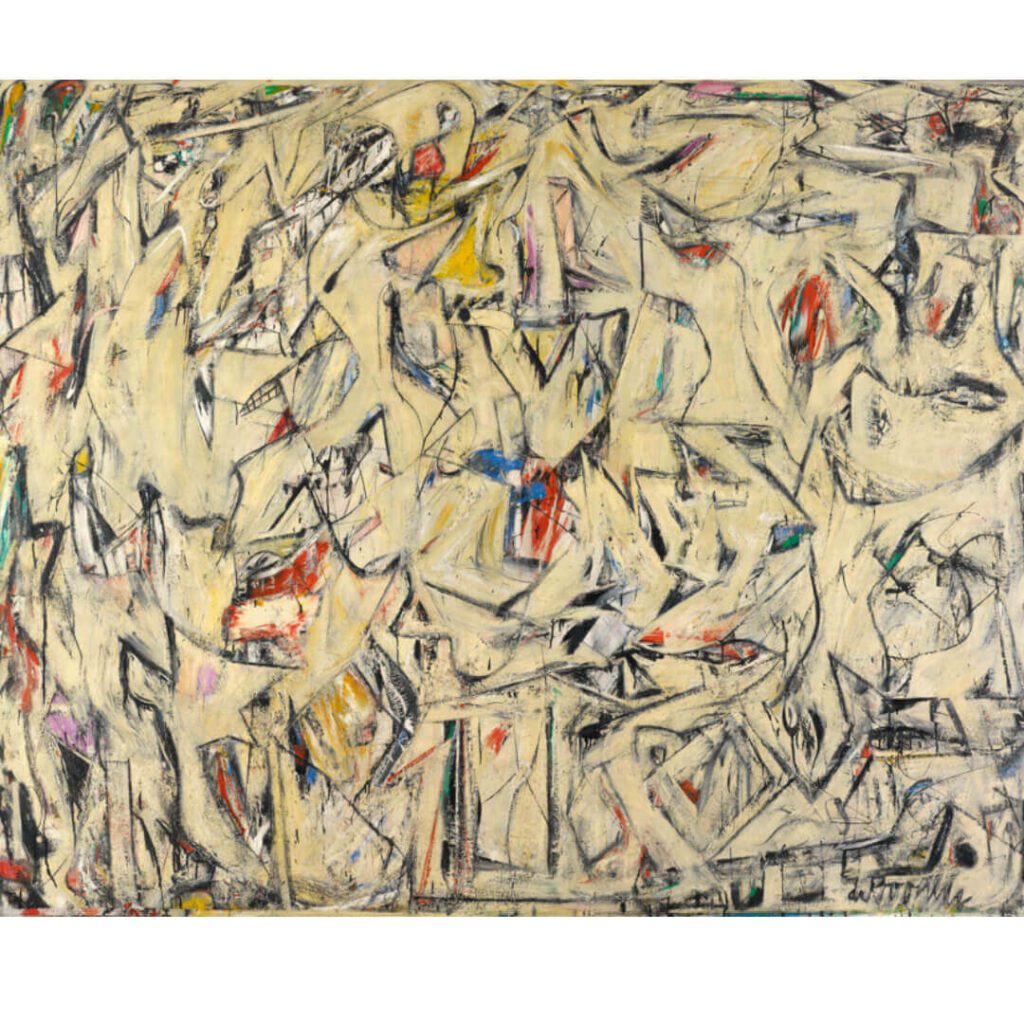
1. “Excavation” (1950): Produced when De Kooning explored the relationship between abstraction and figuration, this large-scale painting is considered one of his most important works. Its complex layers of gestural brushstrokes and bold colors are a testament to his mastery of the Abstract Expressionist style.

2. “Woman I” (1950-52): This controversial painting of a distorted female figure is one of De Kooning’s most well-known works. Its fragmented, almost violent appearance challenged traditional notions of beauty and femininity and established De Kooning as an artist willing to push the boundaries of what art could be.
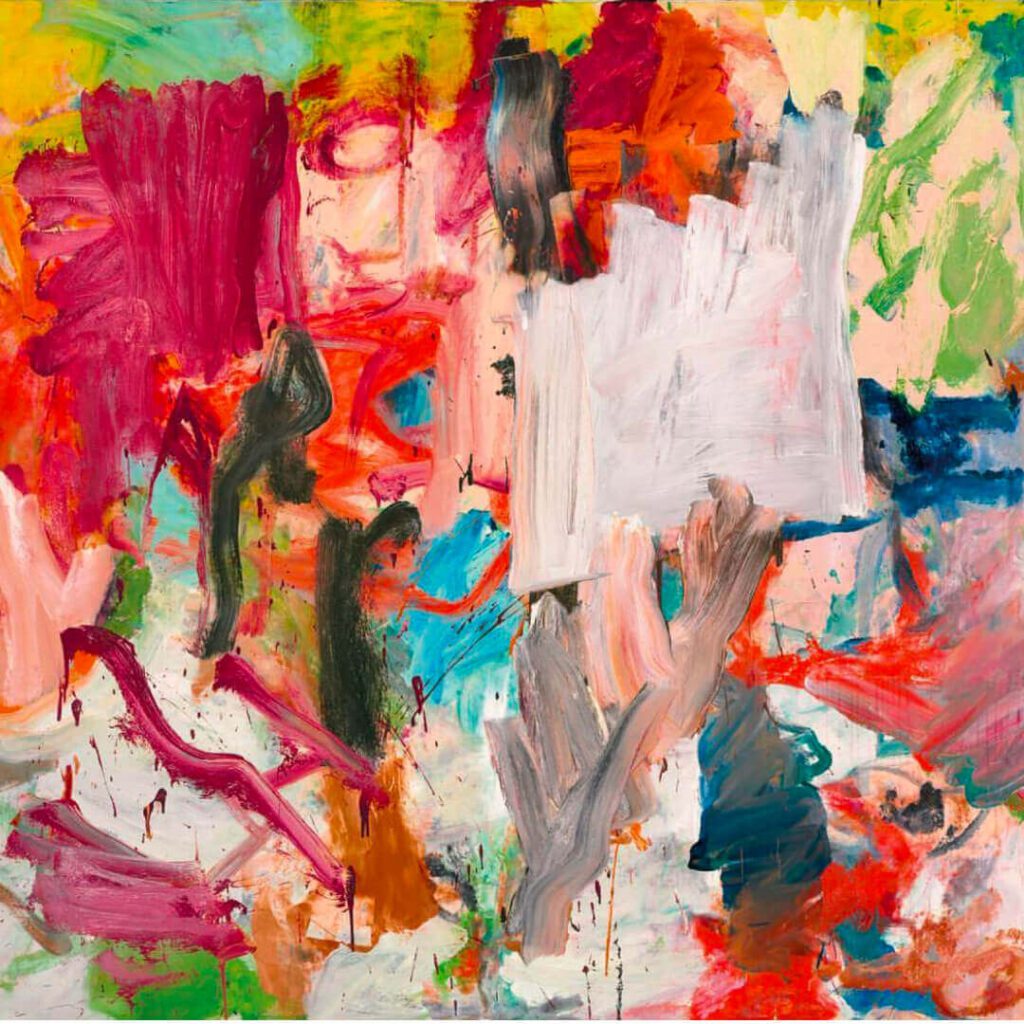
3. “Untitled XXV” (1977): Produced later in De Kooning’s career; this painting is notable for its use of light, shadow, and complex composition. It is considered one of his most mature works and reflects a deep understanding of the power of painting as a medium.
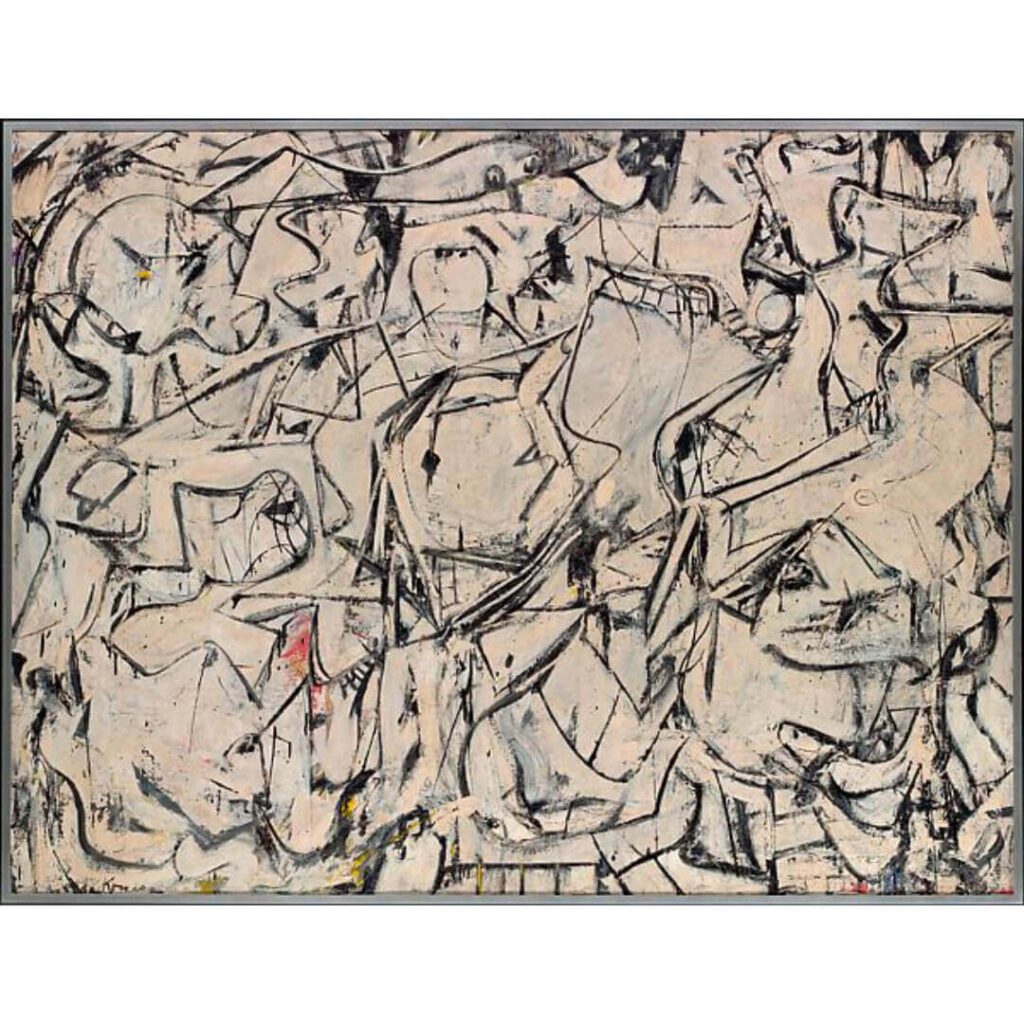
4. “Attic” (1949): This early Abstract Expressionist work reflects De Kooning’s interest in exploring the expressive potential of painting. It’s dynamic brushstrokes and vibrant colors testify to his mastery of the gestural style that would become a hallmark of the movement.
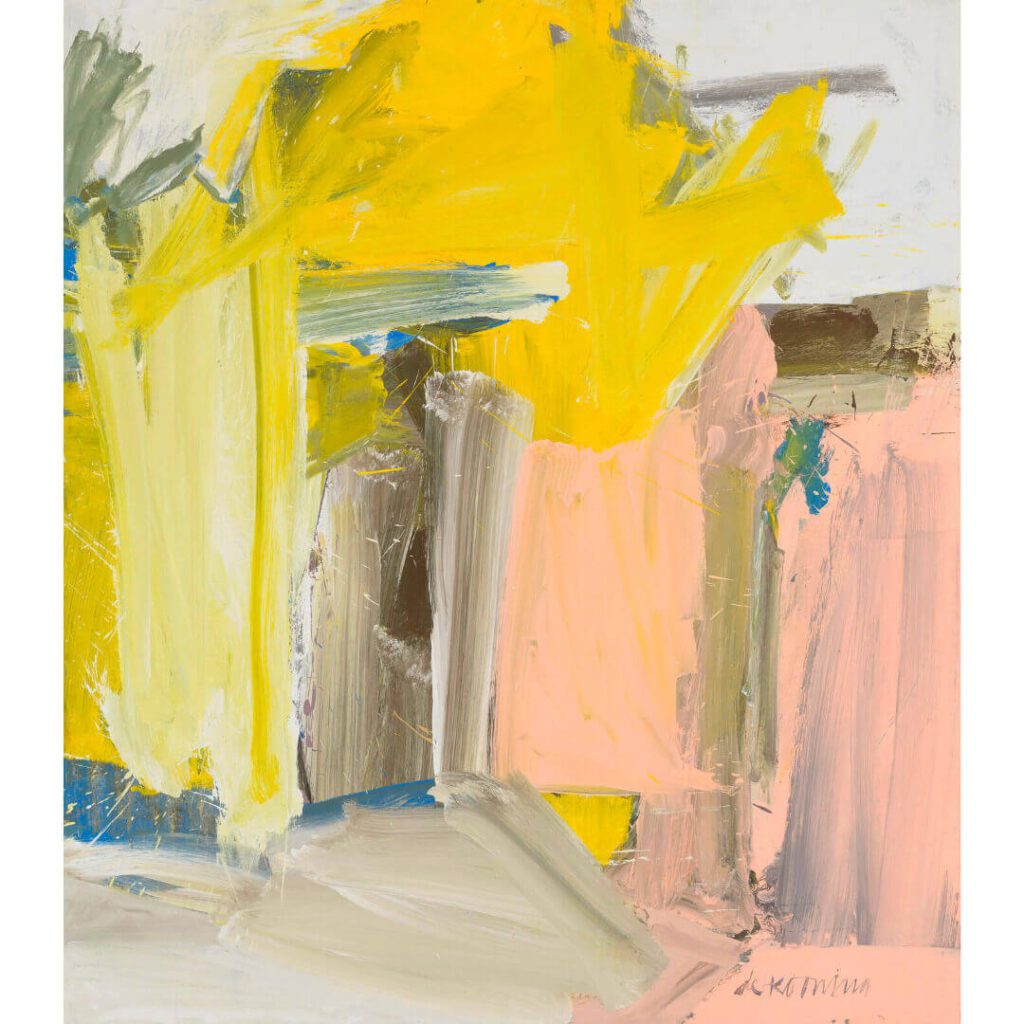
5. “Door to the River” (1960): This painting is notable for using organic shapes and muted colors. It is a departure from the bold, gestural style of De Kooning’s earlier works and reflects his interest in exploring new forms of expression.

6. “Interchange” (1955): This large-scale painting is notable for its complex composition and the interplay of light and shadow. It is considered one of De Kooning’s most important works and reflects his ongoing interest in exploring the boundaries of abstraction and figuration.

7. “Gotham News” (1955): This painting is notable for its fragmented composition and use of bold, contrasting colors. It reflects De Kooning’s interest in the relationship between painting and everyday life and his willingness to experiment with new materials and techniques.

8. “Rosy-Fingered Dawn at Louse Point” (1963): This painting is notable for its muted color palette and complex composition. It reflects De Kooning’s interest in exploring new forms of expression and his ability to create abstract and evocative works.
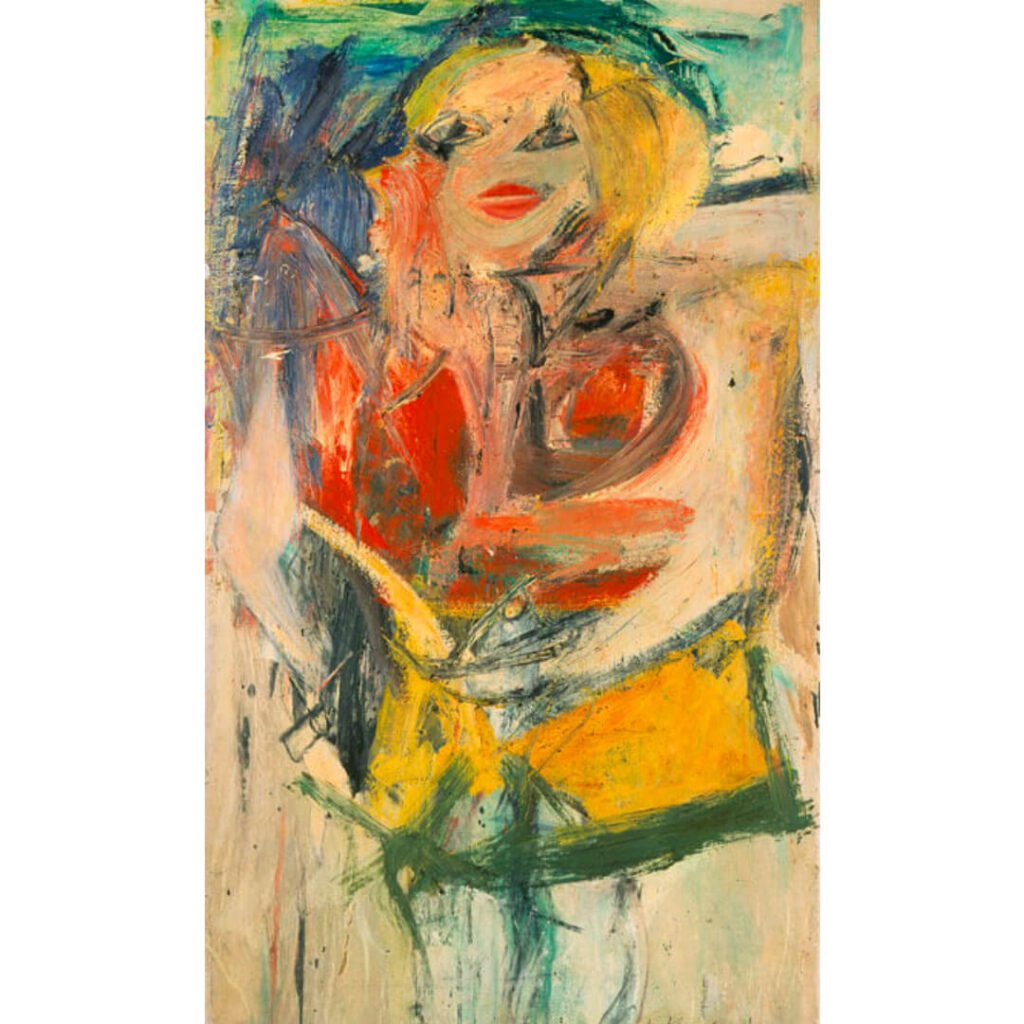
9. “Marilyn Monroe” (1954): This painting is notable for its fragmented appearance and use of bold, contrasting colors. It reflects De Kooning’s interest in using the human figure as a subject for his work and his willingness to explore controversial themes and ideas at the time.
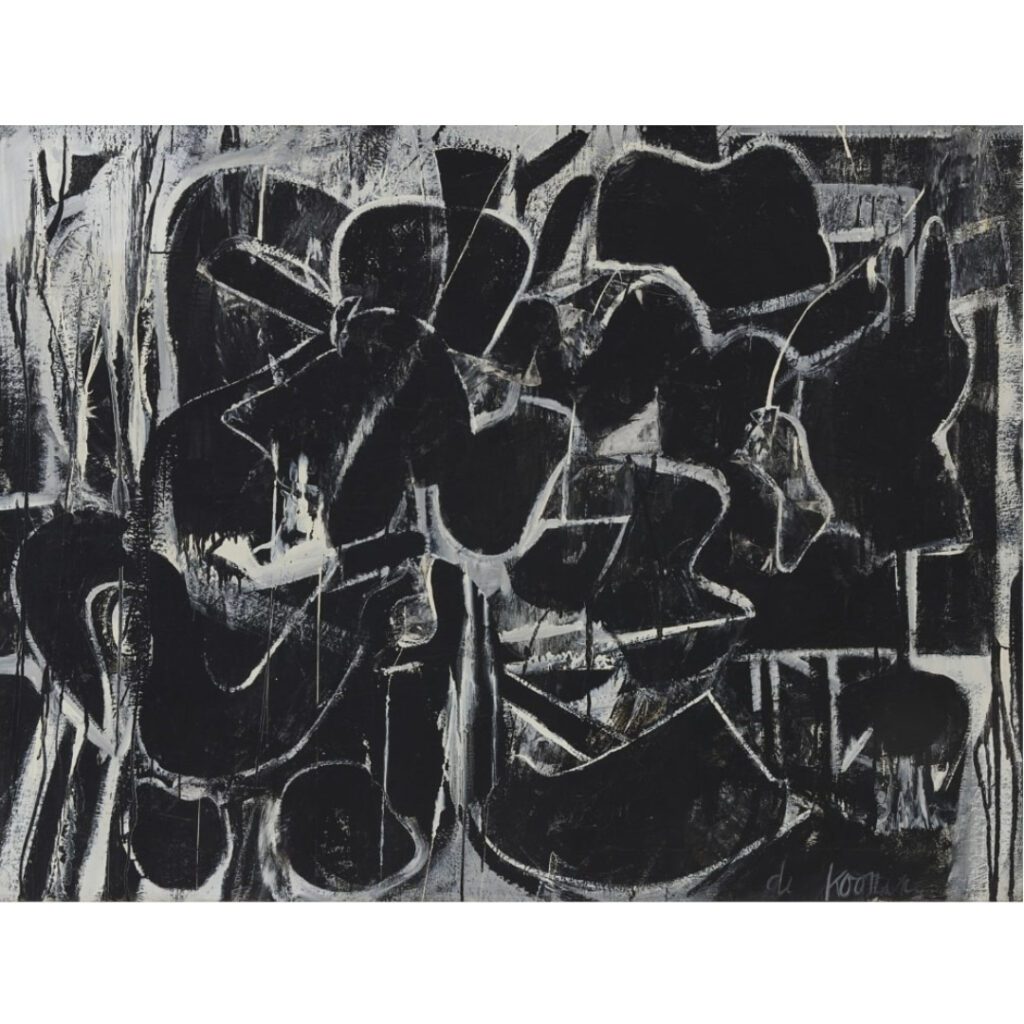
10. “Painting” (1948): Willem De Kooning painted a black and white abstraction that was obtained by the Museum of Modern Art . This painting shows De Kooning’s complex handling of paint and bleeds that go into some solid forms or dissolves into streaks.
When you view these artworks by Willem De Kooning, you can see that he was truly a great Abstract Expressionism artist and deserves his place as one of the more significant Abstract Expressionism artists to have ever lived.
Willem De Kooning is one of our favorite Abstract Expressionism artists.
Anita Louise Art is dedicated to art education, great artists, and inspiring others to find and create their art. We love art that uplifts and inspires. #ArtToMakeYouSmile! #ArtToMakeYouHappy!
If you are interested to see any of my art, you can find out more by clicking here. If you are interested in what inspires me and my paintings, you can discover more by clicking here.
We have a free newsletter and would love you to be part of our community; you can subscribe to the newsletter by clicking here. I would be happy to talk to you if you have any questions. You can reach me, Anita, by clicking here.
Subscribe to our Anita Louise Art YouTube Channel with great videos and information by clicking here.
Join us for our podcast “5 Minutes With Art.” Spend just 5 minutes a week with us to discover and learn about great art and artists. You can find out more about our podcast by clicking here.
Related Questions
What Makes Jackson Pollock’s Art So Valuable?
Jackson Pollock was a brilliant and creative artist who was not afraid to try new techniques with art. He is known for being a founder of Abstract Expressionism and the gestural technique, also known as action painting. He never saw much success in his lifetime, but today his painting fetch millions of dollars and are considered extremely valuable.
By clicking here, you can discover more by reading What Makes Jackson Pollock’s Art So Valuable?.
What Is The Cultural Significance Of Abstract Expressionism Art?
The cultural significance of abstract expressionism art is it was a forerunner for the cultural changes that took place in the United States in the 1950s and 1960s. The Abstract Expressionism movement started after World War II in the 1940s and continued into the 1950s. The world saw great cultural shifts in the 1950s and the 1960s.
You can learn more by reading the blog What Is The Cultural Significance Of Abstract Expressionism Art? by clicking here.
What Makes Mark Rothko’s Paintings So Valuable?
Mark Rothko’s paintings have been valuable for many years; they are in high demand and continue to fetch record prices around the globe. At first glance, the paintings may look simple, but upon closer look, they are very complex; they are meant to evoke our emotions and transport us to another realm.
By clicking here, you can discover more by reading What Makes Mark Rothko’s Paintings So Valuable?.

